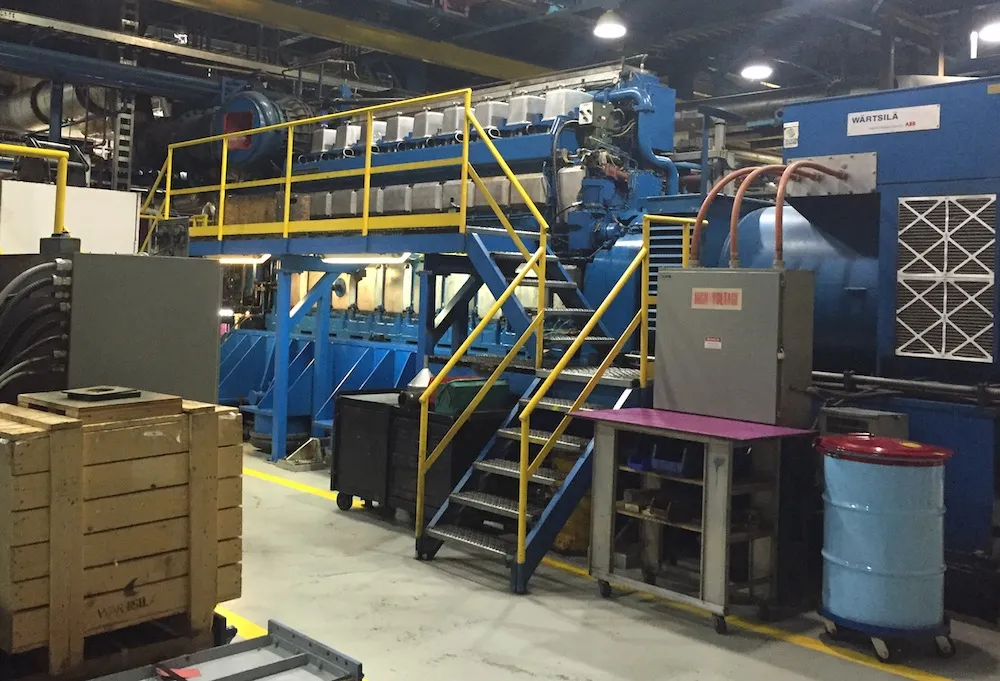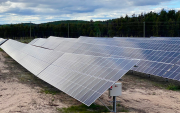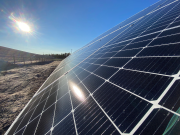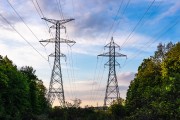This is the third publication in Remote Communities Energy in Transition, a series about challenges, opportunities, and solutions in integrating renewable energy into remote communities’ microgrids. These publications cover the advancements in technical, financial, and human capacity, energy policy, and regulations needed to transition remote communities to clean energy. For more publications, visit our Renewables in Remote Communities website.
Vast distances separate Canada’s remote communities from their neighbours — and the energy systems many of us take for granted when we flip a switch. Since remote communities are not connected to either natural gas infrastructure or the North American electricity grid, they must produce their own energy by burning diesel fuel (derived from oil) to heat their homes and buildings, and to power their small-scale electrical microgrids.
Intermittent challenges
As with any electricity system, reliably operating a microgrid requires that the supply and demand of power be matched exactly, every minute of every day. To achieve this balance, microgrids rely on just a few energy sources — often a single diesel engine. In contrast, larger electricity grids are more resilient and better able to manage sudden demand surges or unexpected loss of a power-generating source.
Maintaining 24-hour system reliability is a priority for all electricity system operators. Consistent (or non-intermittent) energy sources such as diesel and hydropower can deliver energy around the clock. Conversely, intermittent sources of energy such as wind and solar power deliver a variable output, complicating grid operations in a number of ways for microgrids. Nonetheless, there are many successful examples of renewable energy sources being integrated in remote communities to create hybrid microgrids — and the list continues to grow as projects demonstrate they reduce operating costs, carbon pollution, and reliance on imported diesel fuel.
Renewables penetrating the microgrid
The amount of energy that comes from renewable sources in a hybrid microgrid is referred to as the penetration level. There has been a great deal of research on the performance and reliability impacts of high penetration levels of intermittent renewables on an electricity grid; most (but not all) has focused on large-scale systems such as provincial and state grids.
Large grid systems with many different sources of energy are able to handle large amounts of intermittent renewable energy (80–100 per cent), due to the sheer diversity of energy resources available at any one time. In contrast, the current technical limit for penetration of intermittent renewables without storage in remote microgrids is around 20–30 per cent.
Hybrid microgrids have only a few energy sources to draw from. Since intermittent renewable energy isn’t consistently produced, a diesel generator must ramp its electrical output up or down depending on how much renewable energy is available at any given time. (Remember: supply must always exactly match demand.) Older diesel generators tend to run very inefficiently at lower speeds, so having one ramp up and down frequently will shorten its lifespan and undercut the cost savings of operating a microgrid with renewable energy.
Solutions exist
Fortunately, newer technologies are available to alleviate these problems. One promising technology that may be considered when replacing older diesel equipment is the variable speed generator (VSG). VSGs produce power efficiently at much lower speeds than traditional generators, meaning they burn less diesel fuel when complementing a renewable energy source. Further, VSGs allow for a higher maximum level of renewable energy penetration.
Another technology that can complement intermittent renewables, and is familiar to most, is battery storage. When paired with wind or solar generation, batteries can help smooth out hourly or daily variations in energy production, keeping electricity flowing when the sun is not shining or the wind is not blowing. However, batteries cannot store enough energy to address longer seasonal variations in supply — for example, during the long Arctic winter when there is little sunlight.
It’s also important to consider the role that energy demand plays in enabling more renewable energy in microgrids. Matching supply to demand is even more challenging when energy demand fluctuates throughout the day — as people cook, run appliances, and use electric heaters. Reducing overall demand through energy efficiency, and making demand more consistent throughout the day with smart grid technologies can help make a microgrid easier to operate.
Transitioning to clean energy in remote communities brings its share of unique technical challenges. These include maintaining reliability through fluctuations in supply and demand, enhancing control systems to manage intermittent energy sources, and building and operating energy infrastructure in a remote and often harsh environment. These transformational efforts also raise economic, regulatory, and political challenges.
Researchers, industry, government, advocacy groups, and Indigenous leaders at the forefront of solving technical challenges are driving remote communities toward a clean and sustainable energy future. This transition is already underway in remote microgrids across Canada, and the Pembina Institute is committed to working with all of these groups to unlock pathways to eventually eliminating the use of diesel fuel in remote communities.
This article appeared in Clean Tech Canada on February 8, 2019.
Remote Communities Energy in Transition
Publications in this series:
- Diesel, renewables, and the future of Canada’s remote communities
- The True Cost of Energy in Remote Communities
- Remote communities meet renewable energy solutions
- The future of the electric utility in Canada’s remote communities
- Rebuilding Canada’s economy includes energy resiliency in remote communities
- How B.C. can be a leader in economic reconciliation
- Tracking diesel reduction progress in remote communities









